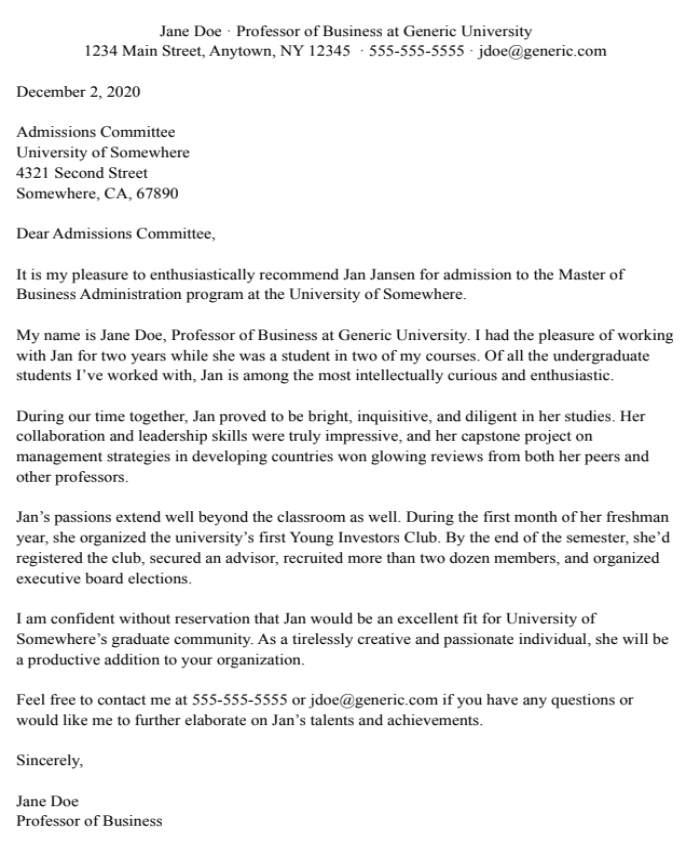How to Make a Recommendation Letter for a Scholarship
Learn How Do You Write a Letter of Recommendation with examples. Get clear tips on structure, tone, and key points to include for a strong and effective letter.

Creating a compelling recommendation letter for a scholarship is crucial to the application process. This letter not only validates the applicant’s qualifications and achievements but also provides a personal endorsement that can significantly influence the scholarship committee’s decision. In this article, we will guide you through the structure, format, and essential content of a recommendation letter, along with tips on maintaining an appropriate tone, ensuring clarity, and achieving conciseness.
Introduction
The introduction of a recommendation letter sets the stage by establishing the relationship between the recommender and the applicant. This section should include:
- Salutation: Address the letter formally, such as “Dear Scholarship Committee” or “To Whom It May Concern.”
- Introduction of the Recommender: State your name, position, and how you know the applicant. Mention the length and nature of your relationship, whether as a teacher, employer, or mentor.
- Purpose of the Letter: Clearly state that the letter is a recommendation for the specific scholarship, mentioning the scholarship’s name to personalize the content.
Body
The body of the letter should provide a detailed account of the applicant’s qualifications, skills, and achievements. It is important to maintain a positive and supportive tone throughout this section. The structure can be divided into several paragraphs, each focusing on different aspects:
- Academic and Professional Achievements: Detail the applicant’s academic accomplishments, significant projects, or professional experience. Use specific examples to highlight their skills and knowledge.
- Character and Personal Qualities: Describe the applicant’s character traits such as integrity, leadership, and resilience. Use anecdotes to illustrate these qualities, demonstrating how they make the applicant a strong candidate.
- Extracurricular Activities and Community Involvement: Highlight the applicant’s involvement in activities outside the classroom, such as volunteering or leadership roles in clubs. This shows a well-rounded character and commitment to community service.
- Potential and Fit for the Scholarship: Explain why the applicant is well-suited for the scholarship. Discuss how their goals align with the scholarship’s objectives and how receiving the scholarship will help them achieve their aspirations.
Conclusion on How Do You Write a Letter of Recommendation
The conclusion should succinctly summarize the key points made in the letter and reinforce your endorsement of the applicant:
- Summary of Endorsement: Reiterate the applicant’s most compelling qualities and achievements, emphasizing why they deserve the scholarship.
- Offer to Provide Further Information: Indicate your willingness to answer any questions or provide additional details. Include your contact information.
- Formal Closing: End with a professional closing, such as “Sincerely” or “Best regards,” followed by your name, title, and signature (if applicable).
After Writing a successful recommendation letter you can apply for currently opened scholarship opportunities.
Tips for Writing an Effective Recommendation Letter
- Be Specific and Detailed: Use concrete examples to substantiate claims about the applicant’s qualifications and character. This adds credibility to your recommendation.
- Maintain Clarity and Conciseness: Avoid overly complex sentences and jargon. Clear and concise phrasing ensures that the letter is easily understood and impactful.
- Use a Template as a Guide: While it’s helpful to use a template for general structure, make sure to personalize the letter to reflect the applicant’s unique strengths and the scholarship’s specific criteria.
- Professional Tone: Maintain a formal and respectful tone throughout the letter. Avoid casual language and ensure that the letter reflects the seriousness of the recommendation.
- Proofread for Accuracy: Check the letter for grammatical errors, typos, and factual inaccuracies. A polished letter demonstrates professionalism and attention to detail.
Here you can also prepare for a scholarship interview
Example Recommendation Letter
To illustrate the above points, here is an example of a well-structured recommendation letter:
[Your Name]
[Your Position]
[Your Institution/Organization]
[Your Address]
[City, State, Zip Code]
[Email Address]
[Phone Number]
[Date]
[Scholarship Committee Name]
[Scholarship Program Name]
[Organization/Institution]
[Address]
[City, State, Zip Code]
Dear [Scholarship Committee],
I am writing to highly recommend [Applicant’s Name] for the [Scholarship Name]. As [his/her/their] [teacher/mentor/supervisor] at [Your Institution/Organization], I have had the privilege of observing [his/her/their] exceptional academic and personal growth over the past [duration].
[Applicant’s Name] has consistently demonstrated a remarkable commitment to [academic excellence/community service/leadership]. [He/She/They] has excelled in [specific subjects/fields], achieving [specific accomplishments, such as high grades, awards, or publications]. One notable example is [describe a specific project, paper, or achievement], which showcases [his/her/their] analytical skills and dedication to [field/subject].
Beyond [his/her/their] academic achievements, [Applicant’s Name] has shown outstanding [character traits, such as leadership, compassion, or resilience]. [He/She/They] has been actively involved in [extracurricular activities/volunteer work], where [he/she/they] has [describe specific contributions or roles]. Through these experiences, [Applicant’s Name] has developed [skills/qualities] that make [him/her/them] a well-rounded and promising candidate for the [Scholarship Name].
[Applicant’s Name] is passionate about [describe applicant’s goals and aspirations]. The [Scholarship Name] will provide [him/her/them] with the necessary resources and opportunities to pursue [his/her/their] ambitions. I am confident that [he/she/they] will make the most of this opportunity and contribute positively to the [field/community].
In conclusion, I strongly endorse [Applicant’s Name] for the [Scholarship Name]. [He/She/They] is an exceptional individual who has demonstrated the qualities and potential necessary to excel. Please do not hesitate to contact me at [your phone number] or [your email address] if you require further information.
Sincerely,
[Your Name]
[Your Title]
[Your Institution/Organization]
Conclusion
A well-crafted recommendation letter is a powerful tool in supporting a scholarship application. By carefully considering the structure, tone, and content, and by using clear and concise phrasing, you can effectively communicate the applicant’s qualifications and achievements. Personalize the letter to the scholarship’s criteria and the applicant’s strengths, and always strive for professionalism and clarity. With these guidelines, you can provide a strong and persuasive endorsement that can make a significant difference in the scholarship selection process.
Letter of Reference Template
This template is to help you begin writing a well-formatted recommendation.
How to format a letter of recommendation
Key Points for Formatting a Letter of Recommendation:
- Header: Include your contact information, the date, and the recipient’s details at the top.
- Salutation: Address the letter to a specific person, if possible.
- Introduction: Clearly state your relationship to the candidate and the purpose of the letter.
- Body: Structure the content with paragraphs discussing the candidate’s qualifications, achievements, and strengths. Use specific examples.
- Conclusion: Summarize your recommendation and offer to provide additional information if needed.
- Signature: Sign the letter and include your name and title beneath it.
- Formatting: Use a professional font and layout, with consistent margins and spacing.
Letter of Recommendation Samples
Click each image to see it in full-resolution

Note: Some helping material is taken from Coursera
